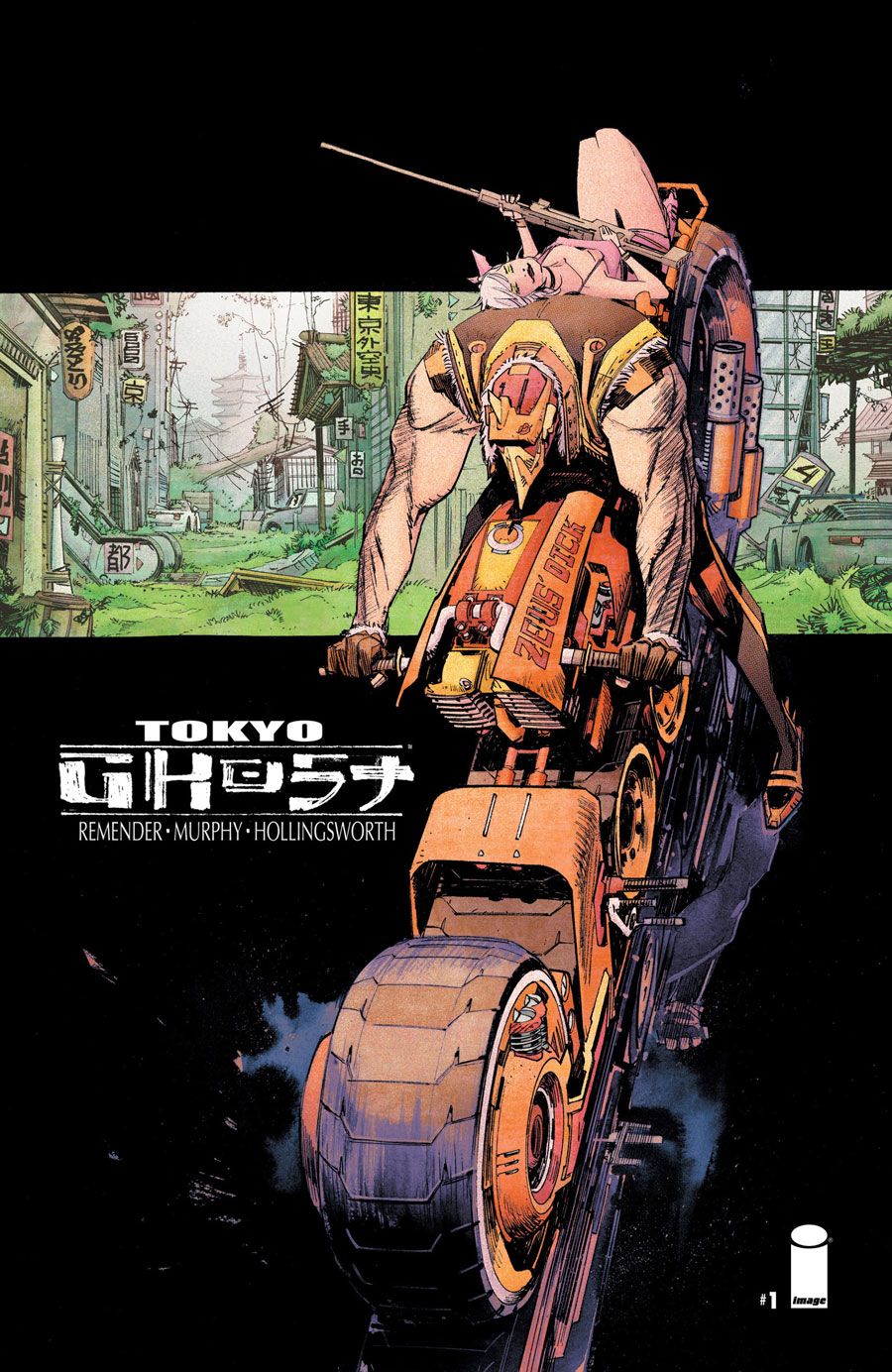Writer Rick Remender explores the darker aspects of the Internet's media saturation culture in "Tokyo Ghost" #1, a series steeped in early 21st century influences extrapolated to an extreme degree. The high octane debut plows through its landscape like a buzzsaw, chewing up both scenery and participants as constables Debby Decay and Led Dent perform one last capture before they head off to Japan, the last country on Earth plugged into the worldwide network of video feeds and artificial mental and physical enhancements. Artist Sean Gordon Murphy accentuates this environment with designs both futuristically shiny and filthy, delivering a physical representation of the dangerous flipsides of technological advancement. The stylized language and dialogue choices take a little bit of adjustment for readers but, once one catches onto Decay's monologuing, the oversized issue becomes bigger than the sum of its influences.
Remender casts a cynical eye on the effects of constant stimulation, which leads to a world where most humans are rendered hopeless addicts to porn, gambling, self-enhancement and all other manner of vice available. These connections inevitably lead to bad choices and not even those on the side of the angels are 100% clean. Decay is straight-edge but her partner and lover Dent is a near zombie, hopelessly addicted to his feeds and stims. Remender uses the villain, a wiry man who views the world as a video game, to explore the dynamics of their relationship and the codependency issues therein. It's headier and more thoughtful than one would expect from the big action and explosions surrounding the dialogue.
Remender and Murphy try to balance this bleak future with a satirical eye, peppering the dialogue with dark jokes and asides and filling in the backgrounds with little visual gags and Easter eggs, even preemptively criticizing their and colorist Matt Hollingsworth's own work on this very book. The only thing that seems to be missing is a bit more humanity. When Remender writes harder science fiction, he usually delves into the emotional core of his characters a bit more, and -- though it's touched upon a bit in this issue -- it seems that aspect of his high quality writing will have to wait for the noise of this world to die down first.
The visuals of this book are incredibly busy, which is great because it just means more gorgeous panels over which to pour. Murphy packs every panel with details both gory and humorous, clearly entertaining himself along with readers. His designs for Dent and his bike -- the selling point of much of their publicity material -- is awesome and almost screams for a physical representation in collectible form. The panel layouts are designed almost like a newsfeed, delivering impactful wide scenes with smaller resonant action below or smaller panel buildups to a larger scene by the end of the page. The book has a dirty sense of humor and a lot of nudity, which is all delivered matter-of-factly. There is no time in this future to dwell on any one thing and nothing can be shocking, lest it interrupt the constant stream of new stimuli for the denizens of the Islands of Los Angeles. Hollingsworth's colors also deliver, giving readers a candy-hued ride that accentuates the screen-tinted, neon surroundings. His work continues to bring out the best in Murphy's art.
The backmatter promises a wild shift in tone for the next issue and then another in subsequent issues, so it's a little early to gauge just how, exactly, this debut issue stacks up to the story they are telling as a whole. However, as an opening piece, "Tokyo Ghost" #1 arrives with style and panache, an entertaining ride across a bleak future.

